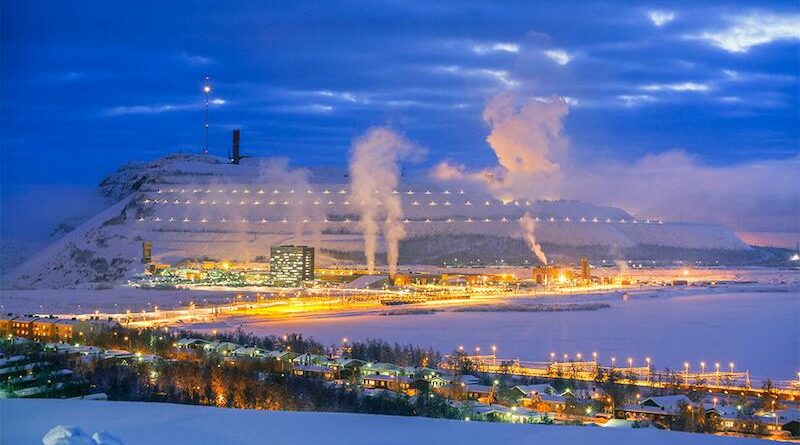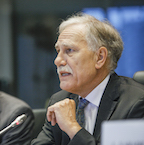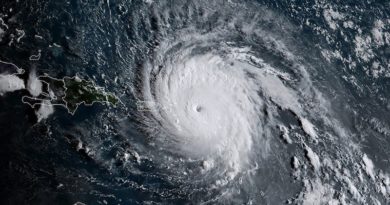
The clock is ticking for the EU regain its sovereignty on rare metals
This January, the Swedish mining company LKAB announced that it has discovered Europe’s largest deposit of rare earth metals, which are essential to manufacture technologies enabling the green and digital transitions, in particular permanent magnets needed for electric motors in, among other things, vehicles or wind power turbines. This could represent a groundbreaking contribution to strengthen the European sovereignty in the sector of rare metals, whose supply is threatened by a global skyrocketing demand putting pressure on limited geological resources and on existing extracting and mining infrastructure.
An intentional and long-standing loss of the European mineral sovereignty
Rare metals are under the political and policy spotlight: In 2021, the Commission issued a report on European strategic dependencies, identifying rare metals among the sectors for which the EU’s dependence on third countries is the strongest and the most concentrated.
The reduction of strategic dependencies was also at the heart of the Versailles declaration of the 27 European leaders of March 2022. In her State of the Union speech of September 2022, the President of the European Commission, Ursula von der Leyen, announced the upcoming publication of a Critical Raw Materials Act.
This activism coincides with the urgent necessity to secure our supply of rare metals, as our demand will exponentially increase to keep up with our decarbonisation objectives. According to the Commission, the EU would need up to 18 times more lithium and 5 times more cobalt in 2030, and almost 60 times more lithium and 15 times more cobalt in 2050 for electric vehicles and energy storage. In parallel, there is no digital transition without rare metals, which are necessary components of a wide range of high-tech products, which may imply tradeoffs and prioritization between the green and digital transitions. As a result, making both transitions a success implies extracting in a few decades as much resources as the humanity did until today.
Because our supply in rare metals is provided by a limited number of third countries, European sovereignty is clearly at stake. Both ecological and economic concerns, regarding the impact on the environment and local biodiversity, the cost of maintaining the industry in Europe as well as the opposition of the public opinion have led Europe to abandon the control of the supply chain to the benefit of third countries with much less restrictive environmental and social legislation. Based on the Commission’s data, while China provides 98 % of the EU’s supply of rare earth elements, Turkey provides 98% of the EU’s supply of borate and South Africa provides 71% of the EU’s needs for platinum.
Building a European mineral intelligence
A first step would be to develop a European mineral intelligence through a thorough inventory of our supply chains to anticipate where our vulnerabilities are the strongest.
Such an initiative would be highly necessary given the strong complexity and opacity of mineral supply chains, which range from the extraction, to the processing and manufacturing. Concretely, the EU should consider the creation of a European observatory, like the ones present in some Member States, such as the OFREMI (Observatoire des ressources minérales pour les filières industrielles) in France, while ensuring a strong level of networking and coordination between competent national authorities. It would be in charge of decrypting the global value chains, assessing technological evolutions and their impacts on the supply, identifying current and future needs in rare metals in the most strategic sectors and bringing companies concerned to build strategic stocks. One can also foresee stress tests missions in order to better anticipate supply shortages.
Securing existing and new supply partnerships
Mastering the demand surge of rare metals will also require to secure new partnerships with reliable, responsible and diversified suppliers while pushing for ambitious environmental and social standards. The EU should strengthen its relations with its traditional allies on the basis of the Mineral Strategic Partnership, a multilateral initiative launched in June 2022 to invest in mining infrastructure in countries that maintain high environmental and social governance standards. But it should also develop new strategic partnerships on the same basis than the EU-Chile agreement passed in December 2022 giving the EU better access to Chile’s lithium resources. Rare metals should play a more important role in trade agreements concluded with third countries and could represent a new channel to encourage those countries to adopt more ambitious environmental and social standards when operating mines and refineries.
Exploring the European mineral potential?
Despite being politically very contentious, the European soil is very rich in resources, especially in the north of the continent, where lay large deposits of nickel and rare earth metals. However, one major obstacle is the length of the permitting procedures, as it can take up to 17 years to open a mine.
In the case of the deposit of rare earth metals discovered in Sweden, the company LKAB announced that it will be at least 10-15 years before it can actually begin mining. If the EU finally decides to go forward in exploring its mineral potential, it must do so with the most robust standards in order to mitigate the undeniable environmental impact and by involving local communities in the decision-making process to win their confidence and earn their support. Additionally, such projects will require massive investments coming both from public and private financial institutions. As such, the creation of a new European Sovereignty Fund and the support of the European Investments Bank (BEI) and National Promotional Banks and Institutions (NPBIs) are promising leads to remove barriers to investments and lock in private investments. Overall, it will be essential to incentivize financial institutions to invest in companies in the critical materials value chain in Europe.
Scaling up recycling capacities
As the EU will progress in the green and digital transitions, recycling will become a rising issue. Many current electric vehicles batteries will reach their end life after 2040, making it necessary to heavily invest in recycling capacities at large scale, which represents an opportunity for recovering rare metals from IT equipments, solar panels, wind turbines etc. It could generate additional supply and therefore contribute to reduce our dependency on external suppliers. Nevertheless, recycling will never fulfill 100% of the European demand. The EU has currently precocious recycling capacities and there are limitations to the collection of appliances and to separation of alloys incorporated in equipments. As a result, the EU will continue to need primary supply of rare metals in the upcoming years.
Hence, the EU will not be master of its energy and digital transitions without strengthening its mineral sovereignty. The EU has defined ambitious objectives. Time has come to reflect on the means to achieve these objectives. In this regard, the Critical Raw Materials Act and the ongoing discussions on innovative European financing instruments represent a unique opportunity to make us able to supply parts of our own demand of rare metals. Conquering more self-sufficiency in the rare metals sector will be an industrial, financial, political, environmental and societal challenge. It remains to be seen whether we are ready to tackle these challenges now and to handle the various consequences thereof.




